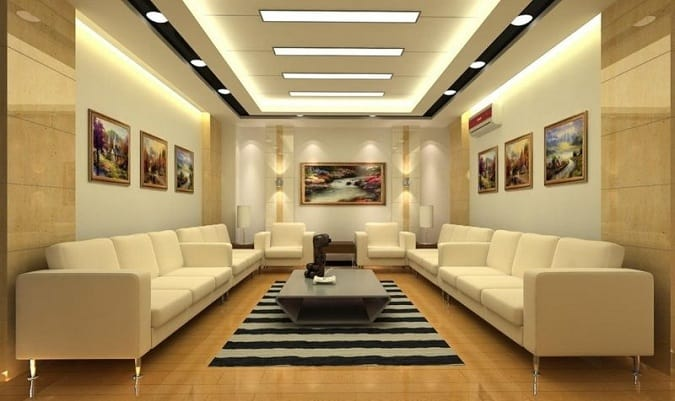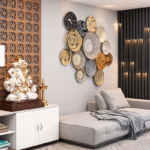Introduction: The Power of a Great Design
Design is more than just aesthetics; it’s an expression of ideas, emotions, and culture. In today’s fast-paced world, a great design can capture attention in mere seconds. Whether you’re crafting a product, fashion line, or digital artwork, the potential for success lies within your creativity best selling desing.
Imagine transforming your innovative ideas into something that resonates with people worldwide. A best-selling design has the power to not only reflect trends but also shape them. It can evoke feelings and inspire action while driving sales and building brand loyalty.
But how does one turn a spark of inspiration into cash? The journey from concept to cash involves multiple steps filled with excitement and challenges alike. Let’s explore this transformative process together and unlock the secrets behind creating designs that sell like hotcakes! best selling desing best selling desing.
Understanding Your Target Market
To create a best-selling design, knowing your target market is essential. This means diving deep into who they are and what they want.
Start by identifying demographics such as age, gender, and location. But don’t stop there; consider their interests and lifestyle choices too. What makes them tick? Understanding these nuances helps shape your design.
Next, engage with potential customers through surveys or social media polls. Their feedback can provide invaluable insights that guide your creative process.
Look at the behaviors of similar audiences in the industry. Analyze what designs resonate with them—colors, styles, and themes that attract attention.
Remember that emotions drive purchases. Tap into feelings like nostalgia or aspiration to create a connection between your design and the consumer’s desires.
Researching Trends and Competitors
To create a best-selling design, understanding the market landscape is crucial. Start by immersing yourself in current trends. Explore platforms like Pinterest and Instagram for inspiration. Pay attention to what captures attention best selling desing.
Next, dive into competitor analysis. Identify key players in your niche and study their designs closely. Look at their strengths and weaknesses—what resonates with customers? What falls flat?
Tools such as Google Trends can help gauge interest over time. Search keywords related to your design ideas and see how they perform against others best selling desing.
Don’t forget about customer feedback on existing products. Reviews can provide insight into what users love or wish was different. This information is gold when shaping your own unique offering.
Keep an eye out for emerging trends that haven’t yet hit the mainstream market. Being ahead of the curve could give you a significant edge in creating something truly captivating.
Brainstorming and Concept Development
Brainstorming and concept development are crucial steps in crafting a best-selling design. It’s where creativity blooms, unshackled by limitations.
Start with an open mind. Gather your team or go solo—whichever inspires you most. Use tools like mind maps or mood boards to visually organize thoughts and ideas.
Don’t hesitate to think outside the box. Jot down every idea that comes to you, no matter how wild it may seem. Sometimes, the most unique concepts stem from unexpected places best selling desing.
Once you have a pool of ideas, narrow them down based on feasibility and marketability. This phase is about filtering through possibilities while keeping your target audience in focus.
Encourage collaboration during this stage; diverse perspectives can elevate your concept significantly. Engage in discussions that challenge assumptions and spark new angles for exploration.
This is just the beginning of transforming raw inspiration into something tangible—a design that resonates deeply with consumers.
Prototyping and Testing
Prototyping is a crucial step in bringing your design vision to life. It’s where ideas transform into tangible concepts. By creating prototypes, you can visualize how your best-selling design will function and resonate with users.
Testing these prototypes is equally important. Gather feedback from potential customers during this phase. Their insights can reveal strengths and weaknesses that may not be apparent initially best selling desing.
Consider using different materials or methods for your prototype to see which resonates most with your audience. Digital mockups are great for tech designs, while physical samples work well for products like apparel or home goods.
Iterate based on the feedback received. This process might involve several rounds of tweaking until you land on a version that truly shines. Embrace the challenges; they often lead to breakthroughs that enhance your final product’s appeal and usability significantly.
Refining Your Design for Maximum Appeal
Refining your design is where the magic happens. It’s about taking that initial spark of creativity and polishing it until it shines.
Start by gathering feedback from a diverse group of people. Their perspectives can reveal insights you might have overlooked. Stay open to constructive criticism; it’s essential for growth.
Next, focus on user experience. Is your design intuitive? Does it engage the audience emotionally? A seamless flow will keep users coming back for more.
Consider color schemes and typography carefully. These elements evoke feelings and set the tone for your brand identity. Subtle adjustments can significantly enhance its overall appeal.
Don’t rush this stage. Take time to iterate and experiment with different variations. Sometimes, less is more—stripping away unnecessary elements often leads to a cleaner, more compelling design that resonates deeply with potential customers.
Marketing and Promoting Your Design
Marketing and promoting your design requires a mix of creativity and strategy. Utilize social media platforms to showcase your work. Instagram, Pinterest, and TikTok are perfect for visual storytelling.
Engage with potential customers by sharing behind-the-scenes content. People love seeing the creative process that goes into making a product.
Collaborate with influencers in your niche to expand your reach. Their endorsement can introduce your design to a wider audience.
Consider running targeted ads on platforms where your audience spends time. This allows you to focus on demographics most likely interested in what you offer.
Participate in online communities or local events related to your design field. Building relationships can lead to organic promotion through word-of-mouth referrals.
Don’t underestimate email marketing either; it’s an effective way to keep interested parties updated about new releases and exclusive offers.
Bringing Your Design to Market: Production and Distribution
Once your design is polished and ready, it’s time to tackle production. Finding the right manufacturer can make or break your success. Take the time to research companies that align with your values and budget.
Consider factors such as quality, cost, and turnaround times. Request samples to ensure they meet your standards before committing.
Next comes distribution. Think about how you want to get your product into customers’ hands. Online platforms like Etsy or Amazon offer vast reach but come with fees and competition.
Alternatively, local boutiques might provide a personal touch while supporting small businesses in your community.
Don’t overlook logistics; plan for shipping costs and delivery times upfront to avoid surprises later on. Building good relationships with distributors can lead to better terms down the line.
Always keep communication open throughout this phase—everyone needs clarity on expectations for a smooth rollout of your best-selling design.
Maintaining Success: Building a Brand and Staying Relevant
Building a brand is about more than just a logo or catchy slogan. It’s about creating an identity that resonates with your audience. Consistency across all platforms helps establish trust and recognition.
Engage with your customers regularly. Use social media to interact, gather feedback, and build relationships. This connection fosters loyalty and keeps your design in their minds.
Staying relevant requires staying informed about industry trends and shifts in consumer behavior. Adaptability is key; don’t hesitate to pivot when necessary.
Innovate while remaining true to your core values. Regularly revisit what made your best-selling design successful and look for opportunities to enhance it without losing its essence.
Consider collaborations or limited editions that can refresh interest in your brand while reaching new audiences. Your story should evolve but always reflect the passion behind the design you created initially—maintaining authenticity amidst change is crucial for longevity.
Conclusion: Turning Your Passion into Profit
Transforming your passion into profit is an exhilarating journey. It requires creativity, dedication, and a willingness to learn.
With each design you create, you have the opportunity to connect deeply with your audience. Your unique perspective can resonate with others who share similar tastes or values.
Building a brand around what excites you not only brings joy but also opens doors for sustainable income. Every successful designer has faced challenges, yet those obstacles often lead to innovation and growth.
Embrace feedback from customers as it helps refine your vision. Keeping an open mind allows for continuous improvement of your best-selling designs.
As trends evolve, so should your approach. Staying adaptable ensures that the essence of your passion remains relevant in the marketplace.
The potential for success is limitless when you align what you love with strategic action and effective marketing strategies. Dive in wholeheartedly; let your creativity shine through every project!
meta description 130 characters
Creating a best-selling design is not just about creativity; it’s a comprehensive process that combines insight, strategy, and execution. By understanding your target market and staying ahead of trends, you lay the groundwork for success. Conducting thorough research ensures your design stands out amid competition.
Brainstorming ideas leads to unique concepts that resonate with potential customers. Prototyping allows for necessary feedback and adjustments before hitting the market. Once refined, your design should be marketed effectively to reach its audience.
Production and distribution play crucial roles in bringing your creation to life while maintaining quality standards. Building a brand around your best-selling design helps ensure ongoing relevance in an ever-evolving marketplace.
Turning passion into profit requires dedication but can yield fulfilling results when executed well.
Meta description: Discover how to create a best-selling design from concept development to marketing strategies and brand-building tactics.


